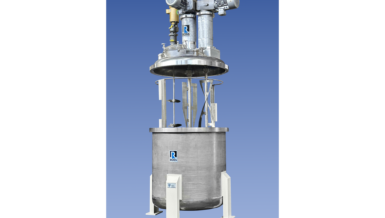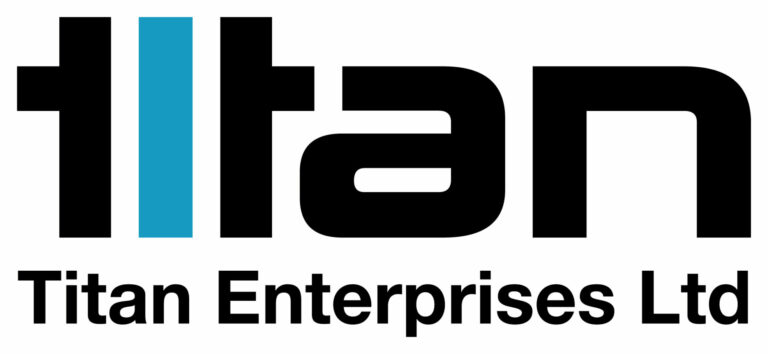These properties include viscosity, density, miscibility, solubility, behavior variability at different temperatures, and phase change. Uniformity, cycle time, and energy consumption become a challenge with difficult liquid mixes. In some cases, achieving a homogeneous blend may be all but impossible with traditional mixing methods. To solve these issues, companies often increase mixing cycle times or the horsepower of their mechanical mixer. These approaches, however, can lead to slower time to market, higher initial equipment costs and greater long-term operating expenses.
When mixing liquids it is crucial to understand the fluid rheology – not just one or two properties but the complete picture. For this reason, it is helpful to team up with a partner like Resodyn, which has experience in mixing a wide range of hard-to-mix materials under a variety of operating conditions. Leveraging the expertise of such a mixing partner and taking advantage of their free demonstrations is often invaluable.
Below are a few of the challenges of liquid mixes traditional technologies must address.
- Viscosity. As noted above, blending liquids with different physical properties can lead to difficulties in achieving desired mixes. Viscosity is one of the conditions that can complicate successful mixing of the liquids. When combining liquids of different viscosities, the general rule of thumb is to add the more viscous liquid into the less viscous liquid, and not vice-versa. The less-viscous fluid is able to achieve more turbulent conditions within a mixing vessel, which facilitates movement and mixing when the more viscous liquid is added though traditional mixing challenges like extended mixing time, insufficient mixer power, and uneven blending remain in play.
- Vortex. It may seem that a strong vortex indicates good vertical mixing within the vessel, but this is usually not the case. Liquid motion throughout the entire vessel must be optimized, and a balance of radial and axial flow must be achieved for efficient blending. Large vortexes often mean the material is moving in a fixed pattern throughout the vessel. But material may get stuck near the impellers or at the far reaches of material movement, resulting in “dead spots.” A strong, or deep vortex may even cause air to be sucked into the mixture, which can be challenging and time-consuming to remove. Companies often install baffles in the mixing vessel to redirect liquid flow and avoid the formation of a deep vortex.
- Emulsions. These blends are similar to mixing oil and water. Emulsions are typically unstable and risk the coalescence, or “settling out” of the ingredients. To address these issues, emulsions often require the addition of stabilizers to prevent the two types of liquids from separating.
How RAM Overcomes Challenging Liquid Mixes
High quality liquid mixing performance requires thorough interaction and distribution of all liquids. It also requires stable suspension conditions for consistent processing characteristics at any point in the completed mix product. ResonantAcoustic® Mixing’s (RAM) intense and pervasive processing facilitates intense liquid-liquid boundary interaction and material distribution, improving dispersion or emulsion stability and performance. RAM technology’s, sound energy induces Faraday disturbances that work to increase liquid surface areas. The surfaces of ingredient liquids become unstable, causing “fingers” and “cavities” to form at the liquid surface boundary or interface. This swift increase in the surface area of the liquids facilitates rapid and homogenous mixing of the ingredients. Click here to watch a video demonstrating the Faraday instabilities created within RAM mixers, which perform the following.
- RAM achieves thorough mixing immediately. Traditional mixing methods process liquids by creating vortices at the ends of blades, propellers or other engineered devices and accessories. This localization of the mixing function requires that all the liquid to be processed must be repeatedly brought “to the mix” and driven through minute mixing zones at the edge of the devices to achieve mixedness. RAM technology mixes everywhere immediately and continuously, bringing the “mix to the material.” The result is rapid, effective, and efficient mixing and processing of virtually any liquid with any other liquid or liquids. Blending is fast and complete. Emulsions are conformant and stable. Minor ingredients are thoroughly and consistently dispersed.
- RAM eliminates sequenced ingredient additions. RAM mixing processes do not require a “right” sequence of ingredient additions. RAM technology performs mixes throughout the entire vessel, immediately and continuously. Direct, multiple-ingredient processing eliminates ingredient addition time, ingredient addition error, and virtually any individual ingredient vessel clean-up.
- RAM extends effective shelf life. The superior result of RAM mixing is better suspension and longer-term stability of many liquid mixes, which prevents, delays or limits settling out of the emulsified mix.
There is no better way to understand the RAM difference than seeing the technology in action. Many viscous, polymer-based processing applications require additional ingredients for performance or coloration, resulting in a mix of ingredients with different characteristics. In this high-speed video, RAM is used to blend a viscous polymer surrogate with liquid food coloring. As shown, RAM’s unique mixing action is able to quickly and thoroughly mix ingredients with different properties, and the final mixture shows the liquid fully dispersed within the polymer.
Resodyn’s Acoustic Mixers
From the world’s top pharmaceutical companies to international manufacturers, global tech giants, and nearly every U.S. National Laboratory, organizations in more than 30 countries rely on Resodyn ResonantAcoustic® Mixers’ single, powerful technology platform. Whether used for development of new materials in a laboratory or for running full-scale industrial production, RAM systems are available in configurations to fit applications across dozens of industries. Below are some of Resodyn’s RAM mixing products.
- Industrial Mixers. Resodyn mixers deliver versatile, reliable, and repeatable performance in countless industrial applications from bench-scale development through continuous production.
- Pharmaceutical. These Resodyn mixers are integrated in the processing protocols of major, global, pharmaceutical products. These protocols range from bench-scale compounding and development mixers through continuous high-throughput production systems.
- Energetics and Hazardous Material. These mixers have become the processing technology of choice in the development and production of energetics materials such as propellants, explosives, and pyrotechnics. Resodyn “H” series mixers are designed specifically for safe processing of sensitive and hazardous materials.
Resodyn is the only company in the world to offer RAM technology. Change the way you think about mixing and processing with a RAM demonstration either online, or on-site at your facility using your own materials. Resodyn is here to help you solve your mixing challenges.
Need help with a challenging liquid mix? Contact us today to learn how RAM can benefit your mixing operations, or to schedule a free demo!






























